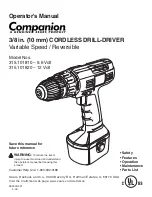
9
WLAN access
Gigaset SL75 WLAN / en / A31008-M700-B112-1-7619 / starting.fm / 24.4.06
Ve
rs
ion05.
08.2
005
not have a Web browser (not to be con-
fused with the handset's Web-based con-
figuration option via the integrated Web
pages).
Access data
To connect your handset to the WLAN, you
will need the following:
u
The network name (SSID). This must be
the same for all subscribers in the
WLAN.
u
An IP address for your handset so that it
can be addressed in the WLAN.
u
The security settings required for
access to the WLAN and for data
exchange (authentication and encryp-
tion).
u
If access to the access point is restricted
by entered MAC addresses, see
The WLAN settings of the handset must
match the settings of the access point.
Security settings
Often, access to the WLAN, and the data
traffic within the WLAN are protected
against unauthorised access.
The security settings for authentication
and data encryption are specified cen-
trally in the access point and apply for all
WLAN subscribers.
All WLAN subscribers must therefore use
the same protocols, passwords or keys for
authentication and encryption (or none at
all).
Before your handset can log into a WLAN,
you must save the protocol used and the
password or key in your access profile.
Your handset supports:
u
security protocol 802.1x for authenti-
cation
u
encryption systems WEP, WPA PSK and
WPA.
Authentication with 802.1x
The 802.1x standard uses the EAP security
protocol (
E
xtensible
A
uthentication
P
roto-
col).
Your handset supports EAP with the two
security distributions LEAP and TLS.
You must specify the following parame-
ters for LEAP or TLS:
u
Login: user name in the WLAN
u
Password: your ID in the WLAN
With TLS, a certificate is required for login
to the WLAN. The content and scope of
the certificate are specified in the access
point. A certificate is a file that contains all
required information to identify the user.
Certificates must be managed centrally in
the WLAN. You must save the certificate
for your handset in the handset. To do
this, use the Web configurator Web inter-
Encryption with WEP
WEP (
W
ired-
E
quivalent
P
rivacy) is the
standard encryption for WLAN networks.
The WEP key can be 64 or 128 bits long:
u
WEP 64
: key with 5 ASCII characters or
10 hexadecimal characters
u
WEP128
: key with 13 ASCII characters or
26 hexadecimal characters
If data encryption with
WEP 64
/
WEP128
is
used in the WLAN, you must save the fol-
lowing parameters in the access profile:
Caution:
You should protect your WLAN against unau-
thorised access!
To do this, set up authentication and/or
encryption in the access point.
EAP Type
Parameter
LEAP
Login Name
Password
TLS
Login Name
Password
Certificate













































